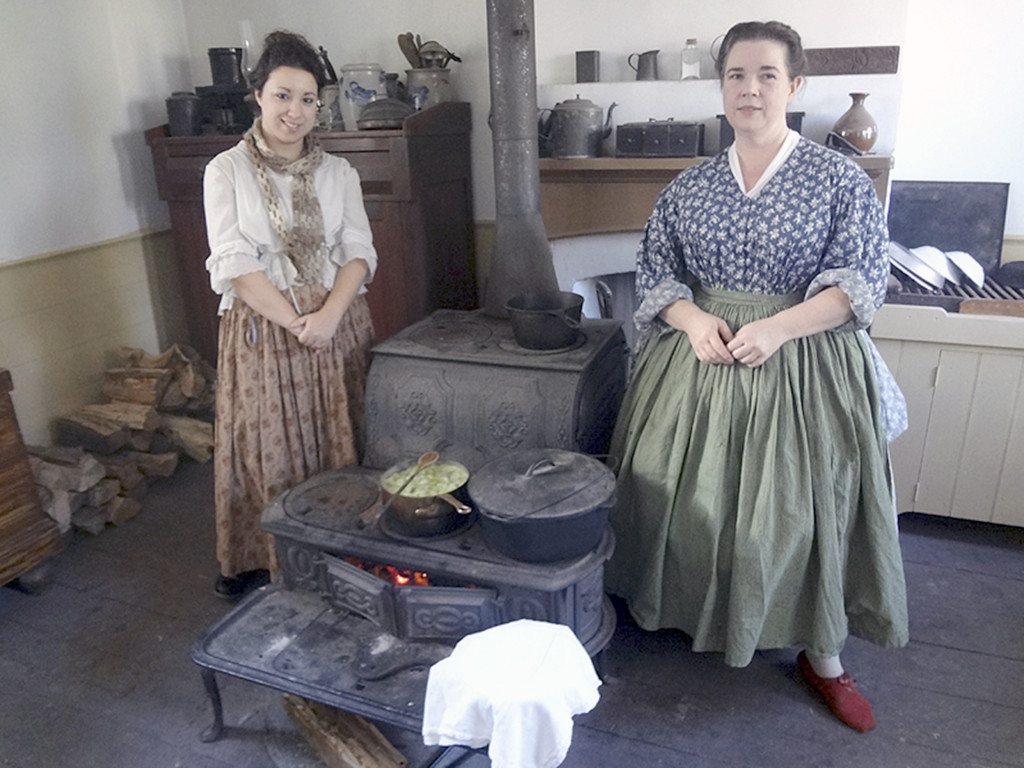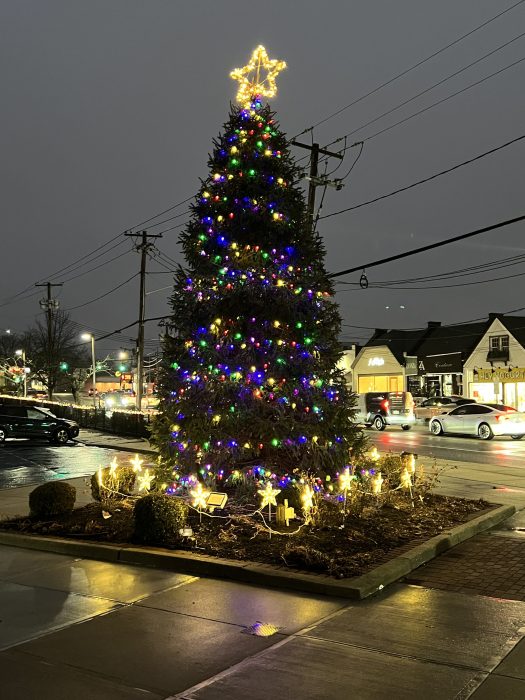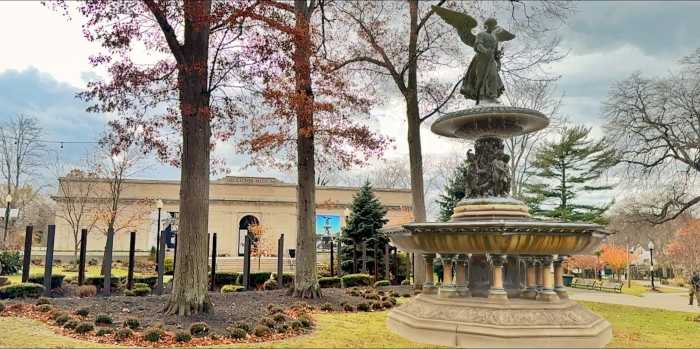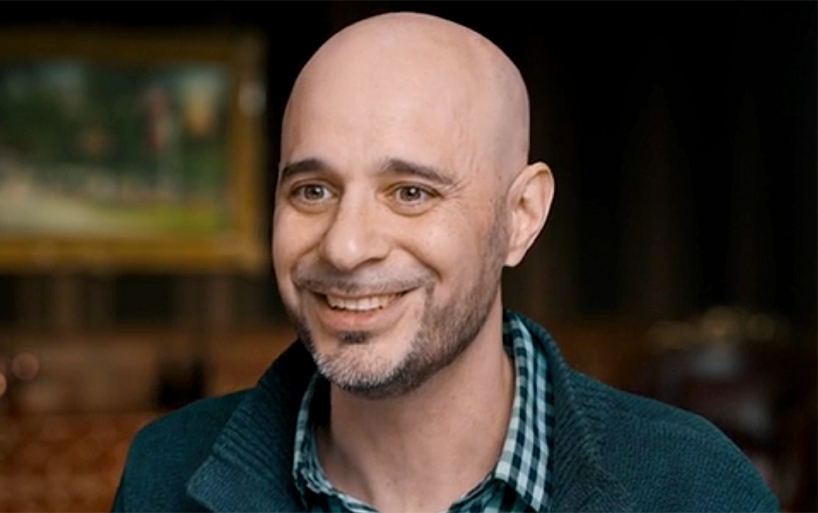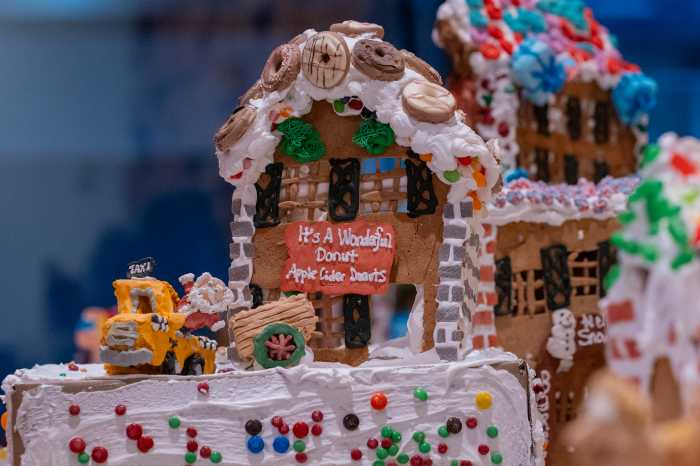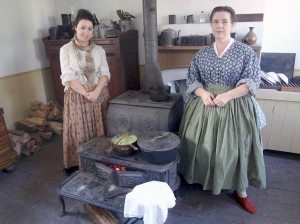
Old Bethpage Village Restoration—Nassau County’s famed living history museum that transports visitors back in time to Long Island’s earliest years—recently celebrated their annual 1863 Thanksgiving Celebration, a re-enactment of turkey day in the exact manner that it was undertaken over 150 years ago.
There were no electric food processors, store-bought pies or fancy microwave ovens—it was all about good, old-fashioned 19th century hard work and ingenuity and the result was a fresh, homemade family feast to be truly thankful for.
Village Supervisor Timothy Van Wickler noted that the 1863 Thanksgiving Celebration—1863 being the year that the holiday was first officially established by President Abraham Lincoln—has been a tradition a since the restoration’s inception in the 1970s. The event serves to highlight the many similarities between how Thanksgiving has been observed between now and the far simpler time in which it originated.
“Back in 1863, people basically did the same thing that we do now. Families got together and cooked food,” he said. “But the difference is that today we get the whole day off, whereas back then most Long Islanders were farmers, so they would be in the field in the morning, eat and then go back to the fields in the afternoon.”
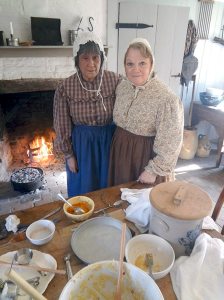
Several of the homes located within the restoration held demonstrations on how various delicious Thanksgiving staples were prepared a century and a half ago. Sadly, however, guests were not allowed to sample the wares, as Van Wickler said that their Village kitchens were not officially certified by the Nassau County Board of Health.
“We have cooking, baking and a turkey rotisserie going on throughout the Village today, as well as music and historic storytelling,” he said. “The food preparation and cooking is the same as it was back in the 1860s. We have beehive ovens, which work by a convection process similar to brick ovens today, as well as stovetop cooking, cooking on open hearths and even a reflector oven for the turkey.”
A reflector oven, or “tin kitchen,” as demonstrated by historian Joanne in the Village’s Williams House, is essentially a metal container containing a rotisserie that surrounds the turkey on all sides but one; the open side faced towards the fireplace in close proximity to the open flame, with the interior capturing the radiant heat and reflecting it back.
“You could roast any type of meat or poultry in it,” Joanne said. “Every 15 minutes you have to rotate the turkey and the bottom of the oven would collect the drippings that people would use to make gravy through a strainer screen. Plus, the rod going through the middle of the turkey heats up, so it’s cooking it from the inside as well. It takes the same amount of time to cook a turkey this way as it would in a modern oven, but what is different is getting the firewood and knowing your temperatures, which involves some guesswork until you get used to it.”
As anyone who has ever sat on their couch with their stomachs full to near-bursting and their belts undone to provide relief from the fury within knows, no Thanksgiving dinner is complete without a wide assortment of mouth-watering pies and cakes. Historian Joanie was putting on a clinic at the Village’s Powell Farm on how these decadent dessert treats were made, utilizing a rather amazing cooking device known as a Dutch oven.
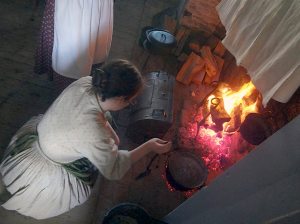
“On a normal day we might use the brick oven, but that takes upwards of four hours to heat up, so today we’re making pumpkin and cranberry cakes using the dutch oven, which is something they used back in the 19th century when they wanted to make something quickly,” she said. “It’s a mini-oven that is essentially a pit with a lid. The hot embers from the fireplace go underneath, the cake goes inside, the lid is closed, and more embers go on top. Yesterday we made cornbread this way and it was done in 20 minutes, but you have to keep your eye on it because it cooks fast.”
All of these painstakingly accurate re-enactments of 19th century life served to highlight the hard work and timing that went into Thanksgiving’s famed meal preparation when conventional ovens, digital thermometers and programmable timers were unavailable. However, Van Wickler said, the holiday’s spirit of thankfulness and family was as strong then as it is today.
“We think it’s very important to show people how Thanksgiving was celebrated back in the 19th century,” he said. “We want to bring it back to its roots. Thanksgiving is one of those holidays where everyone remembers the legends of the Pilgrims and we want to show everyone how it would have been in a different time.”




